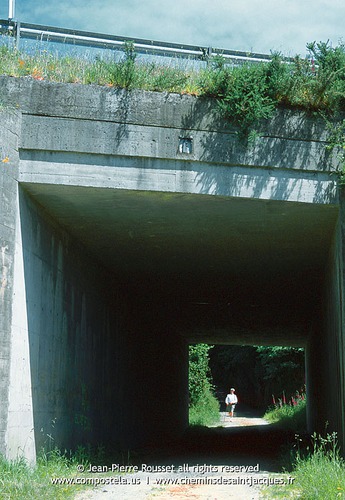The Saint James Pilgrimage is a religious pilgrimage that has been in existence for more than a thousand years. This is because the pilgrimage is very rewarding and provides a great experience. People feel happy, enlightened and complete when they finally complete their pilgrimage at Santiago De Compostela in Spain, the final resting place of Saint James, the Apostle. Many pilgrims also like going on a Saint James Pilgrimage because of the many towns, convents, churches and monasteries that dot the landscape of France and Spain. This means every night on their pilgrimage, there is a big possibility that they will be fed and sheltered. The same goes true on the modern setting. Pilgrims can choose popular and safe route to ensure that at the end of the day, they will have a good dinner and good night’s sleep. However, for those who are looking for more of a challenge as well as a unique pilgrimage route, they might want to try the Tunnel Way.

History
The Tunnel Way was invented during the dark years of history wherein the land was racked by war, plague and other factors that signify the deterioration of civilization. During these years, Vikings would raid the coastal towns and cities in the French and Spanish coast. The existence of the Moors in the Iberian peninsula also resulted to regular pilgrimage routes that are no longer safe for pilgrims. Because of this, alternate routes were used. This resulted to using routes that pass through frontier land or lands that are sparsely populated.
Ancient Route
The ancient route is often called the Basque Inland Route. The Tunnel Way was the safest pilgrimage route because it was located north of the frontier area. The route starts from Irun in France and heads towards the Oria Valley’s southwest tip. This passes through towns like Odizia, Villabona and Zegama. It also passes through the Gipuzkoa and Alava ara. The route gets its name because it passes through the San Adrian Tunnel at its highest point until it passes through the Alavan plains on the way to Santiago De Compostela.
Modern Route
The modern route pretty much replicates the ancient route. The only difference is when it comes through the Alavan plains. Instead of following the ancient route towards Miranda de Ebro, many pilgrims turn towards the south to the town of Haro. They do this because Mirande de Ebro is not really that provisioned well and it can be a bit expensive for standard pilgrims to go here. But going through Haro and then proceeding to Santo Domingo de la Calzada, pilgrims are able to be provisioned better and have a safer route.
The modern tunnel route is very scenic as well as very challenging. People who are really not used towards physical activity should really discuss their pilgrimage plans with a coordinator in order to ensure that they will be able to determine if the Tunnel Route is something that will work for them or not. Going in a pilgrimage should not put one’s health in danger.
Leslie loves hill walking and writing his routes on the web. He has been running the main Camino de Santiago and Walking in Scotland site since 2006. Click the way for more details on this pilgrimage route.

